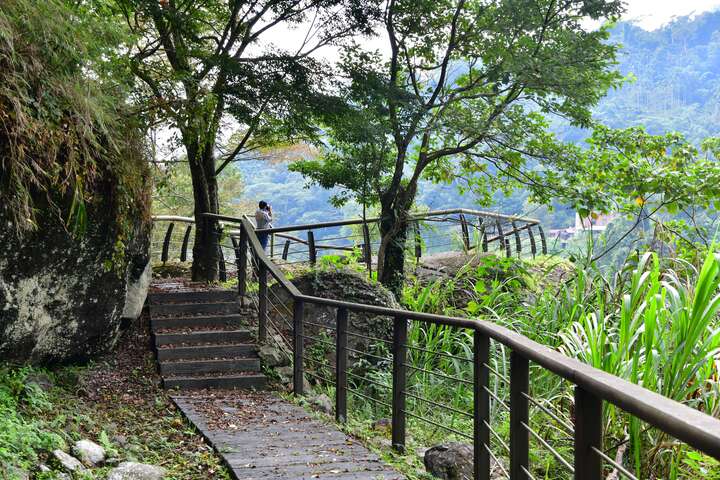Fengshan Big Drum Park Introduction
The remnants of landslides from a century ago have formed the striking boulder landscape of today; the landslides caused by Typhoon Nari in 2001 have also left traces here, revealing geographical features such as river erosion, transportation, and accumulation, making it an excellent outdoor teaching location for geography. From the entrance next to the Xingu Bridge, follow the path beneath the suspension bridge to enter the area composed of giant boulders. From the boulders surrounded by railings, the banks of Ganqing Creek and the Xingu Bridge overhead are in clear view. The tower mountain to the east and the Laiji tribe to the west can also be seen in the distance. Descending the wooden stairway along the circular route to the base of the giant boulders, one cannot help but realize the grandeur of these massive rocks. Approaching the giant boulder and passing through the crevices not only allows for close observation of the textures on the boulder walls but also provides a deeper understanding of the incredible forces exhibited by natural phenomena such as landslides, river erosion, transportation, and accumulation. Within the park, one can observe Taiwan's unique plant species, such as: mountain cinnamon, wood ginger, Taiwan ramie, neem, Taiwan red beech, Taiwan beech, and Taiwan reed bamboo; and one can also look for sightings of the scarlet minivet, the golden-bellied flycatcher, and the broad-billed flycatcher in the surroundings, or enjoy the fragrance of mountain cherry blossoms and mountain hibiscus, or stroll across the suspension bridge. It's a wonderful place for the public to savor the beauty of green mountains and clear waters.






































